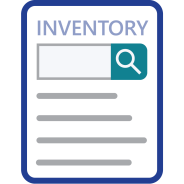
Choose from 5 options:
Learn more about how we recover costs through fees and charges to fund our work.
Cost recovery is a way for government agencies to charge individuals or organisations for the cost of delivering specific services.
As a part of Australian Government policy, we are funded through a cost recovery model.
We recover the full cost of running AICIS using the fees and charges we receive each year from introducers (importers or manufacturers) of industrial chemicals. This means that we use the fees and charges paid to us from introducers to fund our regulatory activities and work to administer the scheme.
Our approach follows the Australian Government Charging Framework, which:
Following the ‘user pays’ principle, we recover our costs through 2 types of fees and charges:
We charge fees for services when we provide a service to a specific introducer. For example, fees apply when an introducer asks us to:
Every year, anyone who introduces industrial chemicals in Australia must register their business with us and pay an annual registration fee. This flat fee covers the cost of administering the registration application.
Most registrants must also pay an extra charge based on the value of industrial chemicals they introduced in the previous financial year. This charge applies to businesses that introduce chemicals above a certain value threshold and increases depending on their registration level.
We use these annual AICIS registration charges to fund our broader regulatory activities. These activities benefit the whole industrial chemicals sector and are not tied to any single introducer, such as:
Read more about our regulatory activities and what we do.
Our fees and charges are based on the:
We use an activity-based costing method to allocate both direct and indirect costs to each regulatory activity. Direct costs include labour and supplier expenses linked to specific services, while indirect costs cover overheads like IT, finance, and governance.
We review our fees and charges every year to avoid over or under recovery.
We regularly update and publish the changes in our AICIS CRIS.
Our fees and charges are authorised under legislation, which provides the legal framework for basing fees and levies on the value of chemicals introduced each year.
See our list of legislation related to fees and charges.
As a publicly available document, our CRIS makes sure we are accountable and transparent about our funding and costs. It outlines:
Read the AICIS CRIS for 2025–26 for the latest details
Access previous versions of the CRIS: